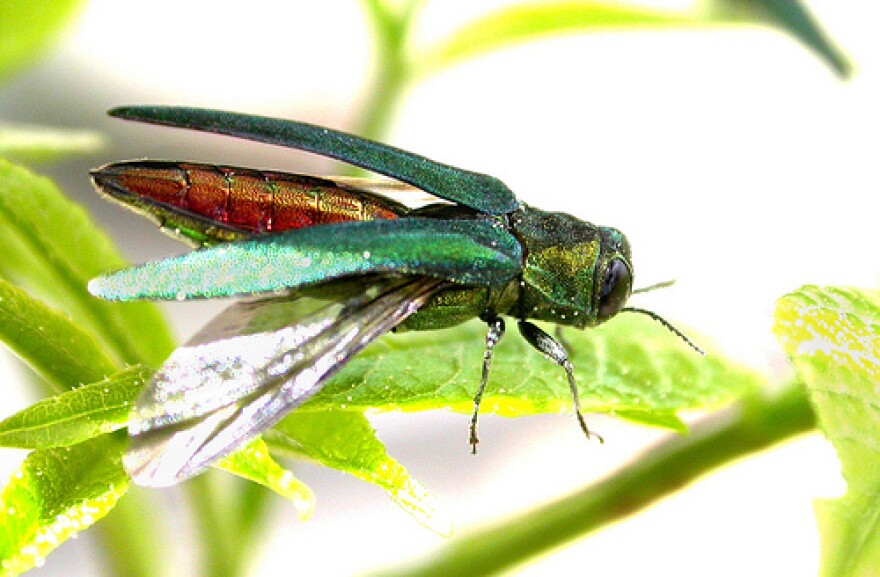This year in particular was a rough year for spongy moths in northern Wisconsin.
The invasive species strips trees of their leaves eventually leading to die off.
“It's really hit Bayfield Peninsula really hard in some areas. It’s getting in some areas where it hasn't been previously. Wisconsin is on the front line of where the spongy mod is expanding into,” said Brian Sturtevant. He’s a research ecologist with the USDA Forest Service at the Northern Research Station in Rhinelander.
Spongy Moths are just one of the forest pests that his work focuses on.

Emerald Ash Borer and Hemlock Wooly Adelgid are invasive species that have been damaging and killing trees.
But it’s not just invasives that have been causing problems.
“There's an Eastern Larch Beetle that's native but is experiencing what we call a climate release. That means that as the climate gets warmer, its damage has been expanding into areas where it hasn't damaged before,” said Sturtevant.
There are ways to manage a lot of the species and limit the damage they do, but the key is early detection.
“It's a huge challenge to be able to just simply distinguish among all the disturbances that are out there,” said Sturtevant.
Sturtevant has been working with researchers from Montana to Massachusetts studying places in northern Minnesota, Wisconsin, and Michigan that have already been hit by forest pests.
The idea is if they can differentiate the disturbances, they can then create mapped products for forest managers to help verify which pest is causing the disturbances and find the leading edge.
“It's just a matter of scale and how you cover enough area. There are other things in practice we've been doing for decades, like aerial surveys, but they're just applied unevenly across different land ownerships. It's hard to know where the frontline really is or the extent of the damage,” said Sturtevant. “There are other products that are out there that do a great job of documenting disturbances. But it's really challenging to get what we call partial disturbances, insects and diseases that only take out certain tree species. Now you're only taking out part of the forests, and it's harder for them to distinguish those against something like drought or something else. That's not really something that they might control.”

Bringing in other scientists has been a crucial part of this project coming together, researchers like Matt Garcia and Phil Townsend at the University of Wisconsin.
“Matt in particular is the real driver. He developed the method, and he's implementing it as kind of an operational tool. Then we've got partners across the Forest Service Research, Forest Service Management, Research and Development, as well as the Harvard Forest out of Harvard University. We've got a lot of partners in this,” said Sturtevant.
Sturtevant received $400,000 in Bipartisan Infrastructure Law funding as part of a larger Ecosystem Restoration effort by the federal government.
He says that funding is key to tackling the large scale of this research and helping forest managers across the Northern U.S.
“They're crying out for help in terms of how to address it, we're losing. We're losing species and hold genera of trees to these different invasives as just one area that's affecting forests,” he said.
Sturtevant says if we don’t act quickly, it won’t just be species of trees we lose.
“Eventually you begin to lose functionality of the forests. Forests provide us with clean water, with wood supply, with recreational activities, all those things that we rely on. And certainly, for the Northwoods economy, it's hugely important. That's why it's an important investment,” said Sturtevant.
Sturtevant and the team of researchers are about a year into the two-year project.
This story was part two of three in our series highlighting local research being funded by the Bipartisan Infrastructure Law.
You can find the previous story on research into creating more resilient forests here.
Next week we’ll introduce you to another researcher who’s utilizing trees to clean up mining waste in the Upper Peninsula.









